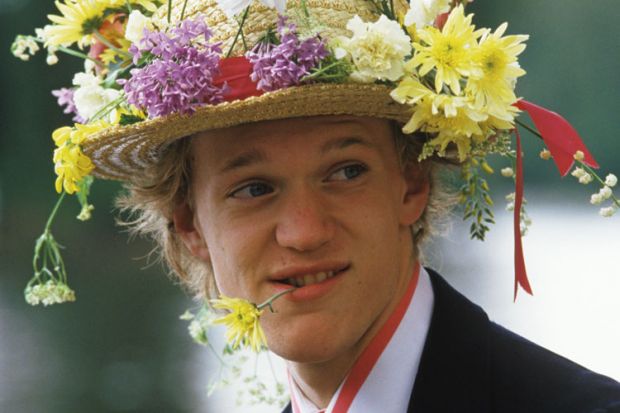Students who went to a state school are more likely to leave university with a first or a 2:1 than graduates who went to a private school, an analysis of degree outcomes reveals.
The study, conducted by the Higher Education Funding Council for England, found a significant correlation between students’ backgrounds and their levels of achievement, with black and ethnic minority learners at a particular disadvantage, and women outperforming men.
In terms of school background, Hefce found that 82 per cent of state school leavers who graduated from English universities in 2013-14 achieved a first or a 2:1. This compares with 73 per cent of independent school students.
The difference was not significant between students from different educational backgrounds with the highest A-level grades, but was more marked among students enrolling with grades AAC or lower.
Other variables such as subject of study explained five percentage points of the difference, the study says. But a four percentage point gap remains.
Les Ebdon, the director of fair access to higher education, said that state school students arrived at university with untapped potential.
“Private schools do a very good job and produce students with grades that maximise their potential,” Professor Ebdon said. “Many state school students could have performed even better if they had the opportunities that private school students did.”
Sir Peter Lampl, chairman of the Sutton Trust, said that universities should do more to take account of the opportunities available to young people when making decisions on admissions.
“We know that state school students are under-represented at universities, particularly those from less advantaged backgrounds and in the most selective universities,” Sir Peter said. “But the fact that they are more likely to get a better degree than their private school peers shows how important it is to improve access to help able young people fulfil their potential.”
The study says that 76 per cent of white graduates at English universities achieved a first or a 2:1 in 2013-14, compared with 60 per cent of black and ethnic minority learners. Other variables explained only 1 per cent of the gap.
A previous Hefce study suggested that students from “non-typical” backgrounds may not feel that their identity is reflected in their university courses, and that this may affect their performance. Other factors may include part-time work commitments, accumulated social capital, or “low expectations” among staff, the research found.
The latest study found that 74 per cent of female graduates achieved a good degree, compared with 70 per cent of men. Part-time and disabled students were also at a disadvantage.
Madeleine Atkins, the chief executive of Hefce, said “persistent unexplained differences” in degree outcomes must be addressed. “We must ensure that all students regardless of background or characteristics fulfil their potential and achieve the degree outcomes they deserve,” she said.
Hefce also examined claims of grade inflation, stating that the proportion of students achieving a first or a 2:1 at English universities has increased by approximately 1.5 per cent every year between 2010-11 and 2013-14.
About half of the annual increase is “explained solely” by changes in student characteristics, such as entry qualifications, Hefce said. The other half remained unexplained but could be down to changes in learning, teaching and retention, or “behaviour following the introduction of higher fees”, the study said.
POSTSCRIPT:
Hefce later stated that its study included a 'transposition error'. In fact, 73 per cent of state school leavers who graduated from English universities in 2013-14 achieved a first or a 2:1. This compares with 82 per cent of independent school students. However, state school pupils were found to outperform independent school pupils with a similar educational and socio-economic background.
Register to continue
Why register?
- Registration is free and only takes a moment
- Once registered, you can read 3 articles a month
- Sign up for our newsletter
Subscribe
Or subscribe for unlimited access to:
- Unlimited access to news, views, insights & reviews
- Digital editions
- Digital access to THE’s university and college rankings analysis
Already registered or a current subscriber? Login




